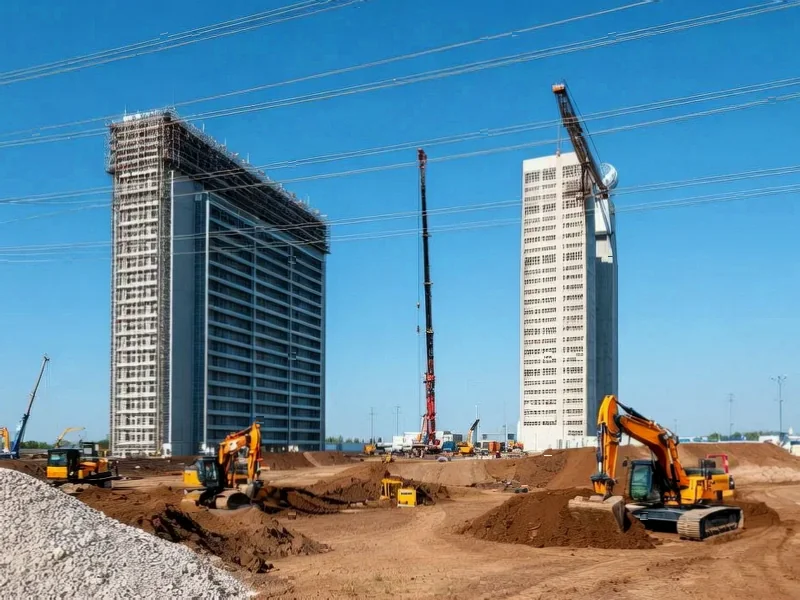According to Fortune, the Tema Electrification ETF (VOLT) has surged 33% year to date, significantly outperforming the S&P 500’s roughly 17% gain, with analysts at Ned Davis Research projecting approximately 20% relative outperformance versus the broader market by 2027. The fund’s thesis centers on the enormous electricity demands of AI infrastructure, with global data center electricity consumption expected to more than double from 415 terawatt hours in 2024 to 945 terawatt hours by 2030 according to International Energy Agency projections. Ned Davis Research analysts Pat Tschosik and Phillippe Mouls recommend the fund as an “Overweight” investment, noting it offers direct exposure to datacenter electrification through holdings like Powell Industries, NextEra Energy, and Bel Fuse. The investment case is strengthened by America’s aging power infrastructure, which received a D+ rating in the American Society of Civil Engineers’ 2025 report card, down from C- in 2021. This creates a compelling investment thesis that extends beyond typical tech sector volatility.
The Technical Reality of AI’s Energy Appetite
What makes this infrastructure play so compelling is the fundamental physics of AI computation. Unlike traditional computing workloads that can be optimized through software efficiency, AI model training and inference operations involve massive parallel processing across thousands of specialized chips. Each NVIDIA H100 GPU, for instance, can consume up to 700 watts under load, and data centers deploy these in clusters of thousands. The power requirements scale exponentially with model complexity – while earlier AI models like GPT-3 required modest computational resources, today’s frontier models demand energy equivalent to powering small cities. OpenAI’s Stargate project exemplifies this trend, with its multi-state footprint representing what may become the standard for next-generation AI infrastructure.
America’s Grid Modernization Challenge
The D+ infrastructure rating from the American Society of Civil Engineers reveals a critical vulnerability in America’s energy system that extends far beyond AI demands. Our national grid was designed for centralized power generation and predictable consumption patterns, neither of which align with the distributed nature of modern data centers and their massive, fluctuating energy needs. The technical challenge involves upgrading century-old transmission lines, implementing smart grid technologies for dynamic load balancing, and developing energy storage solutions to handle peak demands. This isn’t merely about building new capacity – it requires rearchitecting the entire grid ecosystem to handle the unique load profiles of AI workloads, which can spike dramatically during model training cycles.
Beyond the Hype Cycle: Sustainable Infrastructure Investing
The beauty of infrastructure-focused ETFs like VOLT lies in their defensive characteristics during AI market corrections. While technology stocks face valuation pressures based on AI adoption timelines and revenue realization, power infrastructure companies benefit from predictable, long-term contracts and regulated returns. The capital expenditure cycle for grid upgrades typically spans decades, creating revenue visibility that tech companies would envy. More importantly, these infrastructure investments serve multiple economic sectors beyond AI – from electric vehicle charging to industrial electrification – making them less dependent on any single technology trend’s success or failure.
The Coming Capacity Crunch
What many investors underestimate is the physical constraints on power generation and transmission. Building new data centers is relatively straightforward compared to securing reliable, affordable electricity contracts. We’re already seeing technology companies like Amazon and Microsoft making direct investments in renewable energy projects and negotiating long-term power purchase agreements, essentially becoming utility customers of unprecedented scale. The International Energy Agency’s projections likely underestimate the acceleration curve, as each new generation of AI models demonstrates increasing returns to scale that demand even more computational resources. This creates a natural moat for existing power infrastructure players – you can’t easily replicate decades of regulatory expertise, transmission rights, and generation assets.
Technical and Regulatory Hurdles
The infrastructure investment thesis isn’t without challenges. Upgrading power grids involves navigating complex regulatory environments across multiple jurisdictions, environmental permitting processes that can delay projects for years, and physical construction timelines measured in decades rather than quarters. The technical complexity of integrating intermittent renewable sources with baseload power requirements for 24/7 data center operations presents engineering challenges that existing grid operators are only beginning to address. However, these very barriers to entry create the competitive advantages that make infrastructure investments so compelling – they’re difficult to replicate quickly, creating natural monopolies and pricing power for established players.
The fundamental insight here transcends typical sector rotation strategies. We’re witnessing the early stages of a multi-decade infrastructure supercycle where electricity becomes the critical input for economic growth, much like oil was in the 20th century. While AI companies battle for algorithmic supremacy, the real economic rents may flow to those who control the power that makes it all possible.




